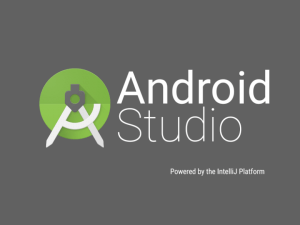Android Studio 3.0 is a large update focused on accelerating your app development on Android. The post will give a summary of What’s new in Google’s Android Studio 3.0
This release of Android Studio is packed with many new updates, but there are three major feature areas you do not want to miss, including: a new suite of app profiling tools to quickly diagnose performance issues, support for the Kotlin programming language, and a new set of tools and wizards to accelerate your development on the latest Android Oreo APIs.
You can download Android Studio 3.0 from the Android Studio website. It is available now.
Android Studio 3.0 supports Kotlin for development
As announced at Google I/O 2017, the Kotlin programming language is now officially supported for Android development. Kotlin is an expressive and concise language that is interoperable with existing Android languages and runtimes, which means you can use as little or as much of the language in your app as you want. Kotlin is a production-ready language used by many popular Android apps on Google Play today.
You can choose to add Kotlin to your project using the built-in conversion tool found under Code → Convert Java File to Kotlin File, or create a Kotlin enabled project with the New Project Wizard. Lean more about Kotlin language support in Android Studio.
More Features
- Java 8 Language features – In Android Studio 3.0, we are continuing to improve the support for Java 8 language features. With the migration to a javac based toolchain, using Java 8 language features in your project is even easier. To update your project to support the new Java 8 Language toolchain, simply update your Source and Target compatibility levels to 1.8 in the Project Structure dialog. Learn more.
- Layout Editor – The component tree in the Layout Editor has better drag-and-drop view insertions, and a new error panel. Learn more.
- Adaptive Icon Wizard – The new wizard creates a set of launcher icon assets and provides previews of how your adaptive icon will look with different launcher screen icon masks. Support for VectorDrawable layers is new for this release. Learn more.
- XML Fonts & Downloadable Fonts – If you target Android Oreo (API Level 26 and higher) for your Android app, you can now add custom fonts & downloadable fonts using XML with Android Studio 3.0.
- Android Things Support – Android Studio 3.0 includes a new set of templates in the New Project wizard and the New Module wizard to develop for the Android Things platform.Learn more.
- IntelliJ Platform Update: Android Studio 3.0 includes the IntelliJ 2017.1 release, which has features such as Java 8 language refactoring, parameter hints, semantic highlighting, draggable breakpoints, enhanced version control search, and more. Learn more.
[alert type=white ]
Check out
How to Speed up your Android Smartphone
Enable Developer Options on Android device
Check Android power source charge Tutorial
[/alert]
Test & Debug
- Google Play System Images – We also updated the emulator system images for Android Oreo to now include the Google Play Store. Bundling in the Google Play store allows you to do end-to-end testing of apps with Google Play, and provides a convenient way to keep Google Play services up-to-date in your Android Virtual Device (AVD). Just as Google Play services updates on physical devices, you can trigger the same updates on your AVDs.

- App Bug Reporter in Android Emulator – To help in documenting bugs in your app, we have added an easier way to generate a bug report with the Android Emulator with all the necessary configuration settings and space to capture your repro steps. Learn more.
- Proxy Support in Android – If you use a proxy to access the Internet, we have added a user interface to manage the HTTP proxy settings used by the emulator. Lean more.
- APK Debugging – Android Studio 3.0 allows you to debug an arbitrary APK. This functionally is especially helpful for those who develop your Android C++ code in another IDE, but want to debug and analyze the APK in the context of Android Studio. As long as you have a debuggable version of your APK, you can use the new APK Debugging features to analyze, profile & debug the APK. Moreover, if you have access to the sources of your APK, you can link the source to the APK debugging flow for a higher fidelity debugging process. Get started by simply selecting Profile or debug APK from the Android Studio Welcome Screen or File → Profile or debug APK. Learn More.
- Layout Inspector – In this release we have added a few additional enhancements for the Layout Inspector including better grouping of properties into common categories, as well as search functionality in both the View Tree and Properties Panels. Learn more.
- Device File Explorer – The new Device File Explorer in Android Studio 3.0 allows you to view the file and directory structure of your Android device or emulator. As you are testing your app, you can now quickly preview and modify app data files directly in Android Studio. Learn more.

Check out the release notes for more details.
Source: android-developers.googleblog.com

